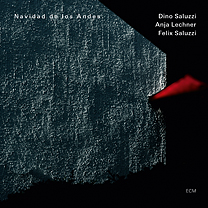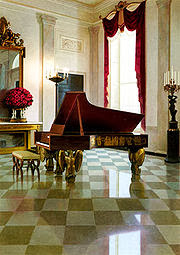In review--Andean Christmas and Tango
Navidad de los Andes
ECM Records
I’ve heard two other of Argentine bandoneon player-composer Dino Saluzzi’s recordings and each time I felt captivated by the soulfulness of his compositions. On Navidad de los Andes (Christmas of the Andes), cellist Anja Lechner and his brother reed player Felix Saluzzi come on board. All these musicians have already collaborated with each other on previous recordings, but this is their debut as a trio on ECM. And yes this is exciting news.
I put my headphones on to listen deeply to this musical landscape and I felt rewarded with the subtle nuances of a bow gliding across strings, the click of the bandoneon keys, and breath flowing through reed instruments. But the best way to describe the music here can be found in the liner notes where Leopoldo Castilla shares his reflections on the Saluzzi’s compositions. “In this beautiful musical work the sound is born with intensity of wind and powerful progression of the sand that preserves memories.”
I add that all the instruments (cello, bandoneon, clarinet and saxophone) are in themselves capable of sweeping melodic runs alternating with dissonance which cause listeners to hold their breath and later they release tension with a gasp or a sigh, just like the tango. Out of all the bandoneon players performing and composing these days, Dino Saluzzi comes the closest to resurrecting the music of the late Astor Piazzolla, another musician who found beauty and tension around every corner.
So let’s take a look at a few of the songs on Navidad de los Andes. Fragments offers a mournful cria with clarinet runs cascading into a wall of sound built by the bandoneon and cello—leaves me close to tears. Son quo’ñati marries the haunting strains of Andes Indian traditional music with the new tango repertoire. Whereas, Requerdos de Bohemia (Memories of Bohemia) offers us a pure tango which feels as fresh and hopeful as new love, yet as happy-sad as mature love. And yet it represents the dance of new love.
Gabriel Kondor recalls the songs on the previous ECM recording, Juan Condori, another venture into indigenous territory wed to Argentine tango. El Vals de Nosotros (Our Waltz) features the high end of the cello and we hear why Anja Lechner receives acclaim for her talent. Otoños (autumn) grieves in musical gasps—the bandoneon resembles bellows in the wind, the clarinet the wind, and the cello a bush seduced then abandoned by the wind.
I’m amazed by how easily and seamlessly these musicians combine their talents, effortlessly exchanging leads, with one instrument performing background for a few measures only to take up the lead melody. If there are any ego issues among these musicians, it’s not evident on this recording that inspires my soul and fills my heart with the type of music that causes me to swoon.




Comments
Post a Comment